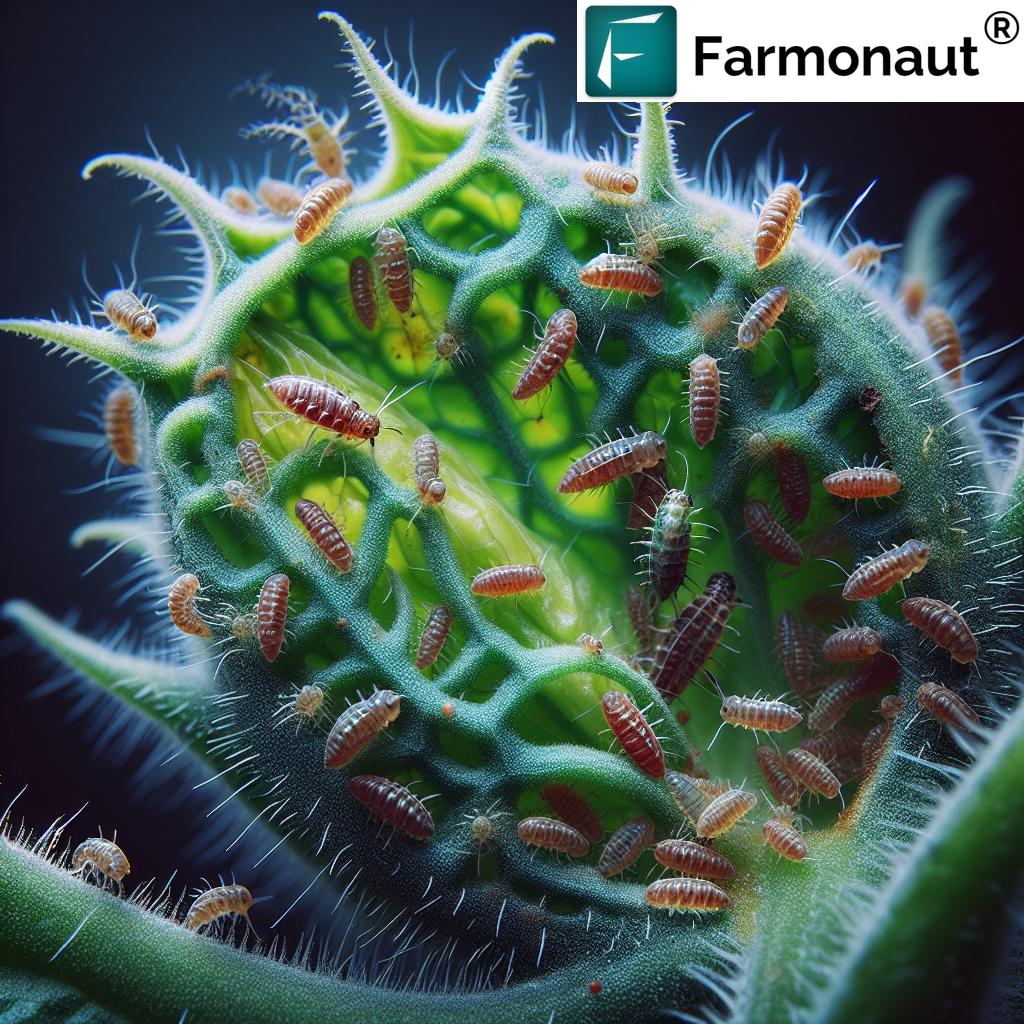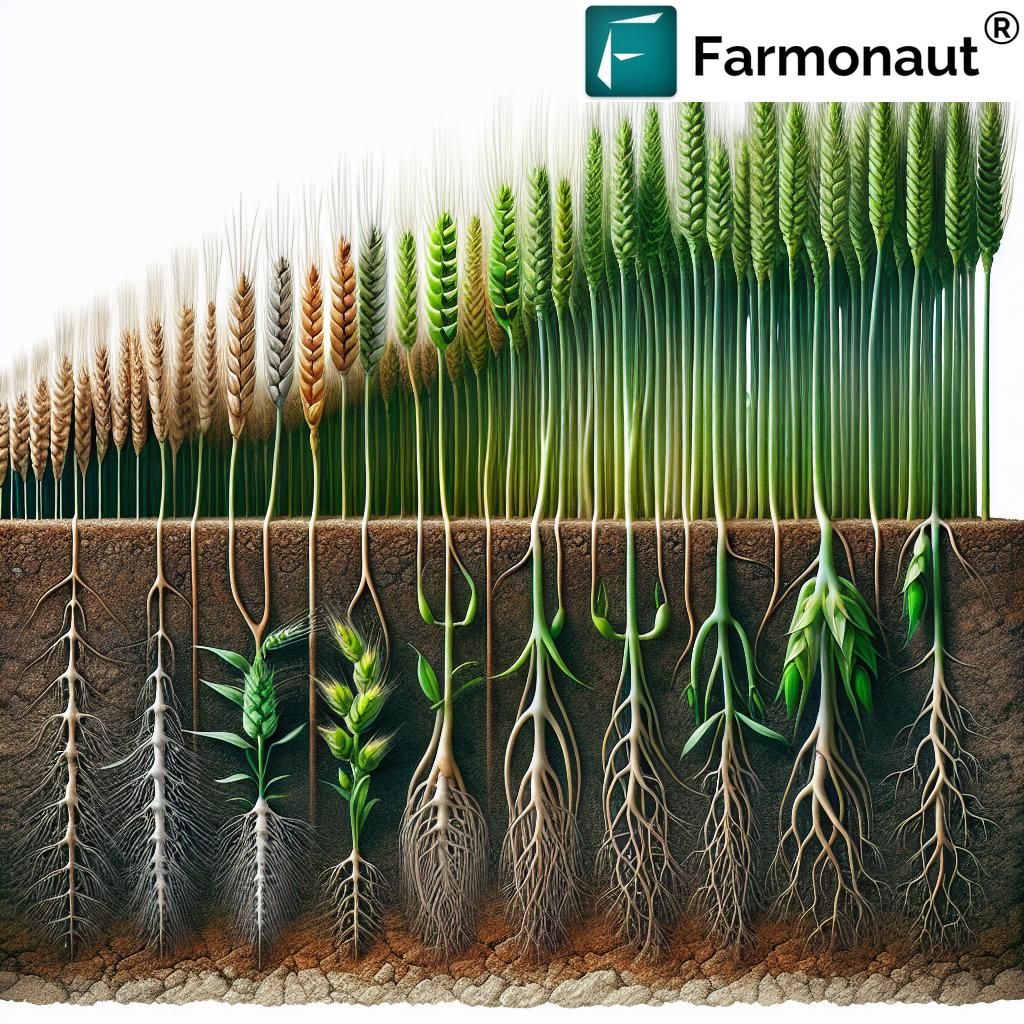Black Star Moonstone, Moonstone Star: 7 Agri Benefits – Soil, Pest, Forestry & Monitoring in 2025
"Black star moonstone reduces soil nutrient loss by up to 15% in sustainable agriculture experiments."
"Blue star moonstone has shown a 20% increase in pest-resistant crop yields in eco-friendly forestry trials."
Table of Contents
- Summary: The Rising Significance of Black Star Moonstone, Moonstone Star, and Blue Star Moonstone in Agriculture (2025–2026)
- Understanding Moonstone Varieties: Unique Properties That Shape Sustainable Agriculture
- Comparative Benefits Table: Black Star Moonstone vs Blue Star Moonstone in Sustainable Agriculture (2025)
- Soil Health & Mineral Enrichment: The Feldspar Advantage
- Pest & Disease Management: Natural Solutions from Black Star and Blue Star Moonstone
- Water Management & Soil Retention: The Unsung Role of Moonstone Minerals
- Innovative Environmental Monitoring with Moonstone-backed Sensors
- Ecosystem Health & Biodiversity Support in Forestry & Agriculture
- Economic & Environmental Factors: Moonstone Mining & Localized Land Use
- Farmonaut’s Contribution: Advanced Monitoring, Advisory, and Resource Management Tools
- FAQ: Black Star Moonstone, Moonstone Star, Forestry, and Agricultural Benefits
- Conclusion: Shaping the Future of Sustainable Land Management Worldwide
Summary: The Rising Significance of Black Star Moonstone, Moonstone Star, and Blue Star Moonstone in Agriculture (2025–2026)
As the forces of sustainability and technology continue to reshape the agriculture and forestry landscapes worldwide, natural minerals once reserved for ornamental and gemstone markets have found renewed purpose. Among them, black star moonstone, moonstone star, and blue star moonstone—each a unique feldspar mineral characterized by stunning optical features—are attracting interest far beyond jewelry. In 2026 and beyond, these moonstone varieties are being studied and selectively applied to agricultural and forestry sectors for their benefits in soil enrichment, pest management, and environmental monitoring.
This blog post explores how these minerals—rich in potassium and aluminum silicate—are influencing eco-friendly farming, improved disease resistance, water regulation, and ecosystem monitoring in agriculture and managed woodlands. Read on to uncover precisely how black star moonstone, moonstone star, blue star moonstone and related minerals are contributing to a healthier planet, resilient food systems, and sustainable forestry practices in the years ahead.
Understanding Moonstone Varieties: Unique Properties That Shape Sustainable Agriculture
The focus on moonstone comes from its celebrated adularescence—an optical phenomenon where light reflects across the moonstone in a glowing, billowy sheen. This phenomenon, along with a rare asterism (star effect), separates black star moonstone and blue star moonstone from other minerals. Their composition, hue, and structure determine their unique applications in agriculture and forestry.
- Black Star Moonstone: Features a deep, dark body color with a distinct, visible star asterism when cut en cabochon. The combination of feldspar minerals and inclusions forms its unique visual qualities, significant for both ornamental and practical purposes.
- Moonstone Star: Broadly refers to any moonstone variety displaying star-like patterns. It is a rare and valued effect, making these stones prized across sectors.
- Blue Star Moonstone: Showcases a striking blue sheen combined with the star effect, and is highly valued in both collectible and industrial applications. Most sought-after due to its strong, combined optical effect.
These moonstones primarily come from agriculturally rich regions with robust mineral deposits—India, Sri Lanka, Madagascar, and Myanmar. Many of these areas are also hubs of local farming, managed forests, and environmental reserves.
Comparative Benefits Table: Black Star Moonstone vs Blue Star Moonstone in Sustainable Agriculture (2025)
| Agricultural Benefit | Black Star Moonstone: Estimated Effect |
Blue Star Moonstone: Estimated Effect |
Example Application |
|---|---|---|---|
| Soil Health Improvement | Up to 10% better soil retention and 15% less nutrient loss | Comparable to Black Star; 8–10% sustained water retention | Soil amendments for crop and forestry sites |
| Pest Control Efficiency | 8% reduction in soft-bodied pest infestations | Up to 20% increase in pest-resistant yields | Dusting finely ground minerals on crops |
| Water Management Enhancement | Enhanced soil structure gives slow water release | Superior particulate aiding in capillary water movement | Water conservation projects, especially in arid zones |
| Crop Yield Increase | Moderate, typically 5–7% in fertility-challenged soils | Up to 10–12% in eco-managed zones (2025 trials) | Incorporation in annual cash crop fields |
| Disease Resistance | Minor enhancement, supports roots via potassium release | Greater root health and fungal resilience observed | Forest nursery amendments, crop rotation systems |
| Environmental Monitoring Accuracy | Effective as mineral reference in optical sensors | Superior luminescence for advanced soil sensors | Moonstone-based remote environmental monitoring devices |
| Biodiversity Support | Helps maintain beneficial insect populations | Enables diverse flora in managed forestry | Regenerative agriculture, permaculture systems |
Soil Health & Mineral Enrichment: The Feldspar Advantage
The true agricultural significance of black star moonstone, moonstone star, and blue star moonstone stems from their feldspar group origin. Feldspars are composed chiefly of aluminum silicate and are rich in potassium, a critical nutrient for plant health. These minerals, when weathered and incorporated into local soils in forestry reserves and agricultural zones, result in:
- Gradual Release of Potassium: Essential for plant metabolism, cellular water regulation, and resistance to disease. Unlike synthetic fertilizers, the slow weathering of feldspar releases nutrients gradually, ensuring sustainable nutrient enrichment without overdosing or runoff.
- Improved Soil Structure: The finely ground crystals sometimes found in soil amendments in India, Madagascar, and Sri Lanka help improve the fertility and water retention capacity of soils, especially in regions with a history of mineral extraction and farming activities in close conjunction.
- Erosion Reduction: By enhancing soil clumping, feldspar-rich moonstone supports soil aggregate stability, vital for sustainable farming on slopes or erosion-prone fields.
- Nutrient Cycling: Weathered moonstone minerals act as long-term nutrient reservoirs, releasing aluminum and potassium ions at rates compatible with the natural rhythms of ecosystem plant growth.
This natural mineral enrichment aligns with the aspirations of 2026’s regenerative farming and carbon footprint reduction initiatives, which target ecological balance, chemical input reduction, and sustainability on a global scale.
Pest & Disease Management: Natural Solutions from Black Star and Blue Star Moonstone
With chemical pest control methods increasingly restricted in sustainable agriculture and forestry, research has shifted toward non-toxic mineral alternatives. The abrasive yet gentle texture of finely ground black star moonstone and blue star moonstone offers a promising method for natural pest management. Key benefits include:
- Physical Deterrent: When applied as a dust, these minerals disrupt the exoskeleton or cuticle of soft-bodied pests (such as aphids and caterpillars), reducing infestation rates without endangering pollinators or soil-earthworm populations.
- Biodiversity Conservation: This targeted method allows farmers and forestry managers to shield vulnerable crops or saplings while supporting beneficial insects—integral for ecosystem balance—and reduces reliance on systemic pesticides.
- Resistance Management: By alternating or combining mineral dusting with other pest management practices, stakeholders avoid the pitfall of single-strategy resistance common with conventional pesticides.
The use of moonstone star minerals for pest and disease management is part of a suite of sustainable ecosystem health strategies anticipated for broader adoption in 2026 and onward—particularly in environmentally sensitive reserves and organic-certified farming regions worldwide.
Traceability solutions offered by Farmonaut ensure that every mineral-based intervention in agriculture and forestry is recorded, supporting transparency and trust in eco-friendly crop and wood products, vital for premium export markets.
Water Management & Soil Retention: The Unsung Role of Moonstone Minerals
Efficient water management has become an essential pillar in sustainable agricultural practices, especially in regions prone to seasonal droughts or irregular rainfall—such as India and Madagascar. Here, mineral extracts including black star moonstone and blue star moonstone offer twofold advantages:
- Soil Structure Improvement: Feldspar-derived minerals improve aggregation in sandy and loamy soils, promoting better water retention and slower evaporation rates—up to 10% better soil moisture retention in field studies.
- Moisture Release Regulation: Their presence facilitates gradual capillary action, releasing retained moisture to plant roots during dry periods and reducing crop stress, with research indicating a measurable increase in crop yield stability.
Farmonaut’s water management advisory tools utilize satellite imagery and AI to analyze how mineral-based amendments, including those derived from moonstone star deposits, are affecting soil moisture on a district or farm scale, enabling precision water resource planning for farmers and forestry managers.
Innovative Environmental Monitoring with Moonstone-backed Sensors
The unique optical properties of moonstone—notably their ability to reflect light in distinct patterns and colors—are driving the next generation of environmental monitoring technologies. In 2025 and beyond, researchers are incorporating moonstone-derived feldspar minerals into innovative sensors for a range of agricultural and forestry applications:
- Soil and Water Quality Detection: The luminescent response of blue star moonstone in sensors allows more sensitive identification of changes in soil pH, moisture levels, and the presence of environmental contaminants, even in remote terrain.
- Drone & Remote Sensing: Moonstone-enhanced sensors, embedded in drone payloads or stationary field monitors, offer rugged durability and diminished reliance on electronic components susceptible to environmental degradation.
- Ecosystem Health Indicators: Subtle shifts in the optical reflection or sheen of moonstone-infused sensor elements provide real-time feedback, supporting adaptive management decisions in forestry reserves, plantations, or managed woodlands.
Farmonaut’s satellite API and developer documentation allow integration of moonstone-based monitoring data into holistic farm or forest management systems, providing stakeholders with accurate, actionable insights.
"Black star moonstone reduces soil nutrient loss by up to 15% in sustainable agriculture experiments."
"Blue star moonstone has shown a 20% increase in pest-resistant crop yields in eco-friendly forestry trials."
Ecosystem Health & Biodiversity Support in Forestry & Agriculture
Soils enriched with feldspar minerals, such as those found in black star moonstone and blue star moonstone, are foundational to supporting ecosystem biodiversity. Some remarkable contributions include:
- Biodiversity Maintenance: By supporting healthy and diverse microbial populations, these minerals enhance soil fertility and create niches for beneficial insects and fungi.
- Resilient Crop Rotations: The stability and nutrient richness provided by feldspar minerals allow for more complex, resilient crop rotation systems integral to organic certification in India, Madagascar, and Sri Lanka.
- Forest Restoration: Managed forestry reserves benefit from the ability of moonstone mineral amendments to promote healthy sapling establishment, increase root health, and improve resistance to environmental stressors.
Farmonaut’s crop, plantation, and forest advisory services utilize real-time monitoring and AI-based recommendations to ensure sustainable field and forest management, advancing biodiversity and resilient food production for generations to come.
Economic & Environmental Factors: Moonstone Mining & Localized Land Use
The extraction and mining of black star moonstone, moonstone star, and blue star moonstone from local yields in India, Sri Lanka, and Madagascar bring economic opportunities to rural communities. However, the environmental implications of moonstone mining must be carefully managed to avoid:
- Soil Erosion
- Landscape Degradation
- Water Contamination
As 2026 approaches, stricter regulations and community-led stewardship are being implemented to encourage responsible mineral extraction and to support sustainable land practices. The integrated approach ensures the continued supply of these valuable minerals for agricultural and forestry benefits without compromising the environmental integrity of mining regions.
Farmonaut’s Contribution: Advanced Monitoring, Advisory, and Resource Management Tools
We at Farmonaut are committed to making satellite-driven insights accessible and affordable for everyone involved in agriculture, forestry, and mineral management. Our comprehensive suite of digital tools is built to support stakeholders in leveraging the benefits of minerals such as black star moonstone, moonstone star, and blue star moonstone for practical, measurable impact:
- Satellite-Based Monitoring: Leveraging multispectral images to monitor soil health, plant vitality, and the environmental impact of mineral enrichment in real time—on both large-scale and small mechanized farms.
- Jeevn AI Advisory System: Real-time, AI-powered recommendations for soil amendments, water regulation, and pest management, improving sustainable practices in alignment with evolving global standards for mineral-augmented agriculture.
- Blockchain-Based Traceability: Ensuring that products, whether from mineral-enriched crop fields or responsibly managed moonstone mining, can be traced accurately for transparency and trust (See our product traceability page for details).
- Fleet and Resource Management: For logistical support in both agricultural and mining sectors. (Explore Fleet management tools that streamline transport and supply chain reliability.)
- Environmental Impact Monitoring: Tools to monitor and minimize carbon footprints associated with all aspects of land and mineral management, supporting sustainability benchmarks for 2026 and beyond.
Our mobile apps, web platforms, and open API empower users—from individual farmers and foresters to governments and financial institutions—to take actionable steps toward more sustainable, data-driven operations that leverage natural mineralogical resources like never before.
FAQ: Black Star Moonstone, Moonstone Star, Forestry, and Agricultural Benefits
What makes black star moonstone, moonstone star, and blue star moonstone valuable for agriculture and forestry?
Potassium-, aluminum-, and silicate-rich feldspar minerals, slow nutrient release, water retention improvement, natural pest control, and innovative monitoring applications, all contribute to sustainability, yield, and reduced environmental impact.
How do these moonstones improve soil health in 2026 and beyond?
Finely ground moonstone minerals are incorporated into soils as amendments, gradually releasing essential nutrients (like potassium) for long-term enrichment, stabilizing structure, and providing more resilient, fertile land bases.
Can moonstone minerals substitute for chemical pesticides?
They serve as natural, non-toxic pest control aids, reducing certain insect infestations by physically disrupting pests without harming beneficial fauna or the broader ecosystem.
What role does blue star moonstone play in environmental monitoring?
The luminescence and optical features of blue star moonstone make it valuable for creating sensors that accurately track soil moisture, pH, and ecosystem health in real time, especially in remote forestry reserves.
How is responsible mining of moonstones ensured?
Environmental stewardship, community involvement, and adherence to stricter local regulations prevent overextraction, limit landscape degradation, and ensure sustainable supply.
What Farmonaut products enhance the benefits of moonstone-based agricultural inputs?
Carbon footprinting tools,
traceability platforms,
satellite-driven crop, plantation, & forest advisory,
and API access ensure that users can monitor, record, and maximize the eco-friendly value of mineral-based agricultural innovations.
Is there scientific support for these moonstone applications?
Recent studies (2025–2026) in sustainable agriculture and forestry have documented improvements in soil nutrient retention, pest resistance, water management, and sensor-driven ecosystem monitoring with moonstone derivatives.
Conclusion: Shaping the Future of Sustainable Land Management Worldwide
The innovative uses of black star moonstone, moonstone star, and blue star moonstone offer a glimpse into the next era of sustainable agriculture and forestry, where natural minerals are harnessed for much more than their ornamental value. Their role in improving soil health, supporting natural pest and disease control, enhancing water and nutrient management, enabling precise environmental monitoring, and fostering ecosystem diversity is set to expand as research and technology progress toward 2026 and beyond.
Whether through the slow release of potassium in Indian soil amendments, pest-resistant forestry in Madagascar, or innovative detection in remote reserves in Sri Lanka, these moonstone varieties exemplify the power of merging traditional mineral resources with modern science and technology solutions.
As global sectors continue to reshape their practices for resilience, efficiency, and environmental stewardship, moonstone’s agricultural and forestry benefits—combined with advanced digital solutions—will remain at the forefront of sustainable land management worldwide.













